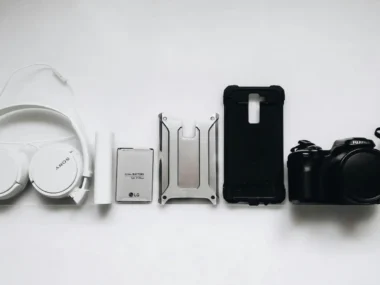Introduction
5G technology is the latest advancement in wireless communication systems, offering unprecedented speed, capacity, and connectivity. As the world becomes increasingly reliant on digital technologies, 5G promises to revolutionize various industries and enhance our daily lives. However, like any new technology, it also comes with its own set of advantages and disadvantages. In this article, we will look at the benefits and drawbacks of 5G technology.
The Advantages of 5G Technology
1. Lightning-Fast Speeds: One of the most significant advantages of 5G technology is its incredible speed. With download speeds up to 100 times faster than 4G, 5G allows for seamless streaming, quick file downloads, and lag-free online gaming. This high-speed connectivity opens up a massive world of possibilities for individuals and businesses alike.
2. Low Latency: Latency simply refers to the time it takes for data to travel from one point to another. 5G technology boasts extremely low latency, meaning there is minimal delay in transmitting and receiving data. This is crucial for applications that require real-time communication, such as autonomous vehicles, remote surgeries, and virtual reality.
3. Enhanced Capacity: As the number of connected devices continues to grow, 5G technology provides the necessary capacity to support this exponential increase. With its ability to connect a massive number of devices simultaneously, 5G enables the Internet of Things (IoT) to thrive, allowing for seamless communication between smart devices and creating a more interconnected world.
4. Improved Reliability: 5G technology offers enhanced reliability compared to its predecessors. It achieves this through network slicing, which allows for the creation of virtual networks tailored to specific applications. This means that even in crowded areas or during peak usage times, users can expect a consistent and reliable connection.
5. Empowering New Technologies: 5G technology serves as a catalyst for innovation and the development of new technologies. It enables advancements in areas such as autonomous vehicles, smart cities, remote healthcare, and augmented reality. These technologies have the potential to transform various industries, improving efficiency, safety, and overall quality of life.
The Disadvantages of 5G Technology
1. Infrastructure Requirements: Implementing 5G technology requires significant upgrades in infrastructure. This includes installing new base stations and antennas, which can be costly and time-consuming. Additionally, the higher frequency bands used by 5G have shorter range, necessitating the installation of more small cells to ensure coverage.
2. Compatibility Issues: While 5G technology offers impressive capabilities, it may not be compatible with older devices. This means that users with older smartphones or other devices may need to upgrade to take full advantage of 5G networks. This can be an inconvenience and an additional expense for some individuals.
3. Security Concerns: As with any wireless technology, security is a significant concern. 5G networks are no exception, and their increased complexity may introduce new vulnerabilities. It is crucial to address these security risks proactively to ensure the safety and privacy of users and their data.
4. Health and Environmental Impact: There are ongoing debates and studies regarding the potential health effects of 5G technology. Some individuals express concerns about increased exposure to electromagnetic radiation. While regulatory bodies have set limits to ensure safety, further research is necessary to fully understand any potential long-term effects. Additionally, the increased energy consumption associated with 5G networks raises environmental concerns.
5. Cost: Initially, the implementation and deployment of 5G technology may come at a higher cost for both service providers and end-users. The infrastructure upgrades, spectrum licenses, and new devices required can result in increased expenses. However, as the technology matures and becomes more widespread, the costs are expected to decrease.
Conclusion
5G technology brings with it a plethora of advantages, including lightning-fast speeds, low latency, enhanced capacity, improved reliability, and the empowerment of new technologies. However, it also presents challenges such as infrastructure requirements, compatibility issues, security concerns, potential health and environmental impacts, and initial costs. As with any technological advancement, it is essential to carefully consider both the benefits and drawbacks of 5G technology and work towards maximizing its advantages while mitigating any potential disadvantages.
Frequently Asked Questions
1. Can I use my current smartphone with 5G technology?
While some older smartphones may not be compatible with 5G networks, most newer models are designed to support this technology. It is advisable to check with your device manufacturer or service provider to determine if your smartphone is 5G compatible.
2. Will 5G technology replace Wi-Fi?
While 5G technology offers high-speed connectivity, it is unlikely to replace Wi-Fi entirely. Wi-Fi still plays a vital role in providing local area network connectivity within homes, offices, and public spaces. 5G and Wi-Fi are expected to coexist, complementing each other in different use cases.
3. Are there any health risks associated with 5G technology?
While concerns have been raised about the potential health effects of 5G technology, regulatory bodies have established safety limits to ensure that exposure to electromagnetic radiation remains within acceptable levels. Ongoing research is being conducted to further assess any potential long-term health risks.
4. How will 5G technology impact the Internet of Things (IoT)?
5G technology is expected to greatly enhance the capabilities of the Internet of Things. With its ability to connect a massive number of devices simultaneously, 5G enables seamless communication between smart devices, paving the way for more advanced IoT applications and services.
5. When will 5G technology be widely available?
5G technology is already being rolled out in various parts of the world, with many countries actively working on expanding their 5G networks. However, the availability of 5G may vary depending from location to location. It is advisable to check with your local service providers for updates on 5G deployment in your area.





